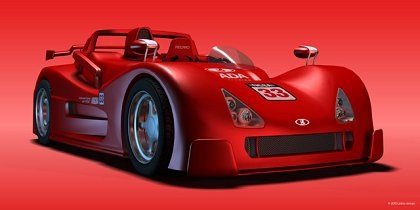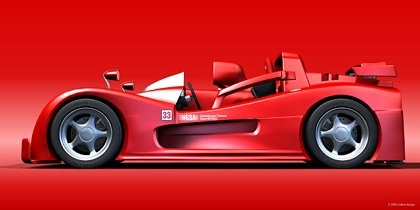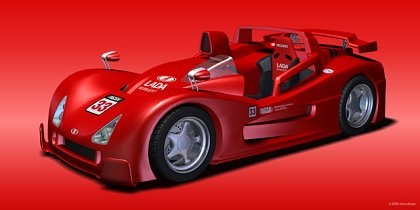The Lada Revolution made a significant impact at the Moscow Motor Show as a bold sports prototype, showcasing the potential for Russian motorsports. Designed and built entirely in Tolyatti, this striking vehicle aimed to revolutionize racing in Russia and was initially intended to hit the roads as a production model. Although the road version never materialized, the promise of hosting a championship featuring these cars was fulfilled by AvtoVAZ.
The Revolution's design was crafted by specialists at Torgmash, a company based in Tolyatti. Its construction featured a lightweight steel frame weighing less than 100 kg, with a transverse-mounted, 1.6-liter turbocharged VAZ engine positioned behind the driver’s seat. The prototype utilized a Torgmash gearbox and employed a newly developed front suspension system with two transverse triangular levers, while the rear suspension incorporated front McPherson struts from previous racing models.
Racer Vitaly Dudin played a pivotal role in the vehicle’s development, testing the prototype on various tracks in Russia and Germany for several months. His feedback led to several enhancements to improve safety and performance, including increasing the frame's rigidity, reinforcing the upper safety roll bar, enhancing side protection for the cockpit, and lowering the driver’s seat. After extensive modifications, including aerodynamic tweaks following wind tunnel testing, the car underwent a significant transformation from its original prototype form.
Despite these efforts, the Revolution faced harsh criticism during its early races. Drivers found it unreliable and difficult to customize, likening it to a rental kart rather than a competitive race car.
In 2005, the team continued refining the prototype. They modernized the cockpit by enhancing side protection, adding an additional safety arc in front of the steering wheel, and improving the driver’s seat comfort. The handling issues were addressed by replacing the rear McPherson struts with a new five-link suspension system. Further aerodynamic improvements were made to the front bumper, hood, and rear diffuser.
After these enhancements, drivers reported a noticeable improvement in the car’s controllability. It became easier to navigate turns smoothly, and lap times decreased by nearly a second.
Today, the Lada Revolution continues to evolve within the Lada National Racing Series, showing that there is still potential for development in this once-controversial concept car.


































